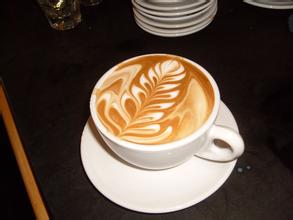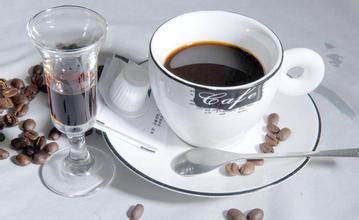Sidamo Coffee Manor Ted Manor introduces Sidamo coffee beans
Harald is not only one of the best sun-tanned coffee in the world, known as "coffee in the wilderness", but more like a beautiful legend. Harald, a name that reflects the rise and fall of Essex. At a time when the means of transport were still underdeveloped, especially when horses were the main means of transportation, high-quality thoroughbred horses became the goal that people pursued and aspired to. At this time, Essex Harald had the best thoroughbred horses in the world. So they initially classified the coffee grade as "quality coffee is as important as horses of purebred blood." So the bags of raw Harald coffee beans we see are still printed with pictures of horses, and this traditional packaging has been maintained until now for Harald coffee, which is grown in areas ranging from 900m in the Darolebu plain to 2700 m in the highland mountain range of Chercher in eastern Ethiopia. These mountains do provide unique characteristics for these perennial coffee beans: the fruit is full and long, moderately acidic, with a typical mocha flavor. Harald Coffee is the world's leading premium coffee; although the variety is produced abroad, it gives people a friendly feel, smooth and smooth taste, giving people the rich taste of real mocha coffee. Harald coffee has almost the lowest caffeine content, about 1.13%. It is estimated that of the 52000 hectares under cultivation, the average annual production of this coffee is 26000 tons (equivalent to 430000 bags of 60 kg coffee) Ethiopia (Ethiopia, Ethiopia), latitudes 6 to 9 degrees north. Tropical forests ranging from 34 to 40 degrees east longitude, 1600 to 1800 m above sea level. Ethiopia produces between 200000 and 250000 tons of coffee each year. Today, Ethiopia has become one of the largest coffee producers in the world, ranking 14th in the world and fourth in Africa. Essex is the birthplace of coffee in the world, the first country to grow coffee and maintain the oldest coffee culture, and still maintains a very traditional and ancient coffee cultivation process-a lot of forest coffee. In the sixth century, people in Ethiopia began to chew coffee with spices, and it was most common for hunters to wrap coffee in bacon as the best dry food, so that they could have enough to eat and have the spirit to hunt. So chewing coffee as a tradition. In the mid-13th century, Essex was already using pans as a tool for roasting coffee. "Mocha" is civilized as one of the earliest and once the largest coffee trade ports in the world. Located in Yemen across the Channel of Ethiopia, Ethiopian coffee was once exported through the Yemeni port of Mocha. Now the port of Mocha has dried up, but the coffee produced in the nearby area is still used to calling it mocha.

Important Notice :
前街咖啡 FrontStreet Coffee has moved to new addredd:
FrontStreet Coffee Address: 315,Donghua East Road,GuangZhou
Tel:020 38364473
- Prev

Nicaraguan Coffee Heavenly Manor introduces the flavor and taste characteristics of Nicaraguan coffee manor
In many countries, coffee production will be seriously affected for political reasons. Nicaraguan coffee industry is no exception. The 1979 revolution forced coffee planters to flee to Miami. A period of indecision followed, when the government considered whether to redistribute land (including many plantations), which led to a shortage of coffee and a decline in production from the early 1970s.
- Next

Introduction to the Flavor characteristics of Indonesian Coffee in Kahayang Gan Manor Coffee Manor
The coffee was discovered because stingy Dutch planters banned local workers from drinking coffee. In order to get the magical fruit they had worked so hard to grow, they had to find another way to find it in the excrement of civets. After cleaning and grinding, it was made into world-class coffee, which was then found by the Dutch and became more expensive. And as a major tourist destination in Indonesia
Related
- Does Rose Summer choose Blue, Green or Red? Detailed explanation of Rose Summer Coffee plots and Classification in Panamanian Jade Manor
- What is the difference between the origin, producing area, processing plant, cooperative and manor of coffee beans?
- How fine does the espresso powder fit? how to grind the espresso?
- Sca coffee roasting degree color card coffee roasting degree 8 roasting color values what do you mean?
- The practice of lattes: how to make lattes at home
- Introduction to Indonesian Fine Coffee beans-- Java Coffee producing area of Indonesian Arabica Coffee
- How much will the flavor of light and medium roasted rose summer be expressed? What baking level is rose summer suitable for?
- Introduction to the characteristics of washing, sun-drying or wet-planing coffee commonly used in Mantenin, Indonesia
- Price characteristics of Arabica Coffee Bean Starbucks introduction to Manning Coffee Bean Taste producing area Variety Manor
- What is the authentic Yega flavor? What are the flavor characteristics of the really excellent Yejasuffi coffee beans?

